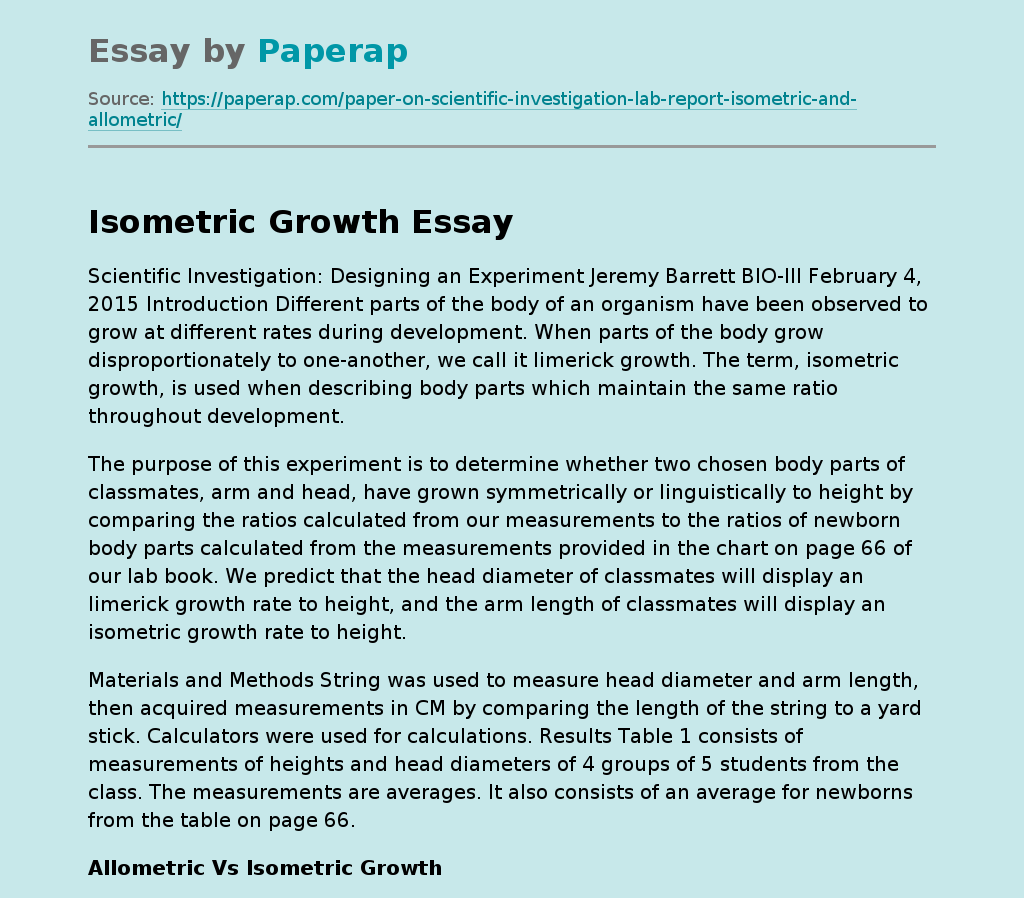Isometric Growth
Scientific Investigation: Designing an Experiment Jeremy Barrett BIO-III February 4, 2015 Introduction Different parts of the body of an organism have been observed to grow at different rates during development. When parts of the body grow disproportionately to one-another, we call it limerick growth. The term, isometric growth, is used when describing body parts which maintain the same ratio throughout development.
The purpose of this experiment is to determine whether two chosen body parts of classmates, arm and head, have grown symmetrically or linguistically to height by comparing the ratios calculated from our measurements to the ratios of newborn body parts calculated from the measurements provided in the chart on page 66 of our lab book.
We predict that the head diameter of classmates will display an limerick growth rate to height, and the arm length of classmates will display an isometric growth rate to height.
Materials and Methods String was used to measure head diameter and arm length, then acquired measurements in CM by comparing the length of the string to a yard stick.
Calculators were used for calculations. Results Table 1 consists of measurements of heights and head diameters of 4 groups of 5 students from the class. The measurements are averages. It also consists of an average for newborns from the table on page 66.
Allometric Vs Isometric Growth
Isometric Growth. (2019, Dec 05). Retrieved from https://paperap.com/paper-on-scientific-investigation-lab-report-isometric-and-allometric/
